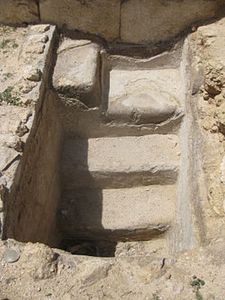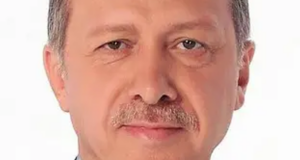“The main reason for prohibitions against sexual intercourse in a standing position is the danger that it could become mixed dancing.”

A Mikveh from the time of the legendary sage Hillel, whose conversions would not be accepted by today’s Rabbinate.
Jerusalem, August 18 – Israeli religious leaders on the conservative end of the spectrum continued to voice opposition this week to conversions performed outside the official Rabbinate’s auspices, explaining that such a phenomenon might lead to mixed dancing.
After a number of prominent Rabbis broke with the Chief Rabbinate and endorsed – in several cases presided over – conversions to Judaism without going through the official channels, a furor erupted over the implications, from the complexities of keeping track of questionable converts for purposes of marriage and the overall role of religion in an otherwise remarkably secular state. In addition to the technical societal difficulties that recognizing non-Rabbinate conversions poses, Haredi opponents of independent conversions emphasized that legitimizing such procedures raises the prospect of males and females moving rhythmically to music together, a scenario that generations of Rabbis have sought to avoid.
Conversions involve three steps for men, and two for women. Prospective converts are queried by a panel of qualified experts in Jewish jurisprudence as to the sincerity of the religious commitment, after which the convert immerses in a mikveh, or ritual bath. Male converts must also undergo circumcision. While technically it is not necessary to study for conversion, in contemporary practice no Rabbinic authorities will accept a convert who has not studied enough to make the required commitment a credible undertaking. Few, if any, material differences exist between the content and process of the Rabbinate’s conversion and those performed by Orthodox Rabbis outside the official framework, but opponents of recognizing independent conversions argue that it is a slippery slope from recognizing non-Rabbinate conversions to recognizing non-Orthodox, and therefore questionably Jewish, conversions. From there, the argument continues, it is but a small step to condoning the gyration of men’s and women’s hips in the same space.
“The principle of preventing mixed dancing is an ancient and sacred one,” said Rabbi Alter Krum, head of the Organization of Yidden for Virtuous Education of Youth (OYVEY), which has campaigned heavily to keep non-Rabbinate conversions from being recognized in the Ministry of the Interior population registry. “One of the main reasons, if not the main reason, for prohibitions against sexual intercourse in a standing position is the danger that it could become mixed dancing.”
Proponents of independent conversions, both Orthodox and non-Orthodox, say the Rabbinate’s attitude represents hypocrisy. “The supposed concern for clarity in who is permitted to marry whom, and the risk of mixed dancing involved, seems to have no bearing on the Rabbinate’s representatives’ own conduct,” said Rabbi Asher Bara, who broke with the Rabbinate last year over marriages conducted independently. “The vast majority of weddings the Rabbinate itself presides over include mixed dancing, so I’m not buying the rationale.”
Reform Rabbis also expressed misgivings about the mixed dancing concern, saying they would probably not consider valid a marriage at which mixed dancing did not take place.
Please support our work through Patreon.




